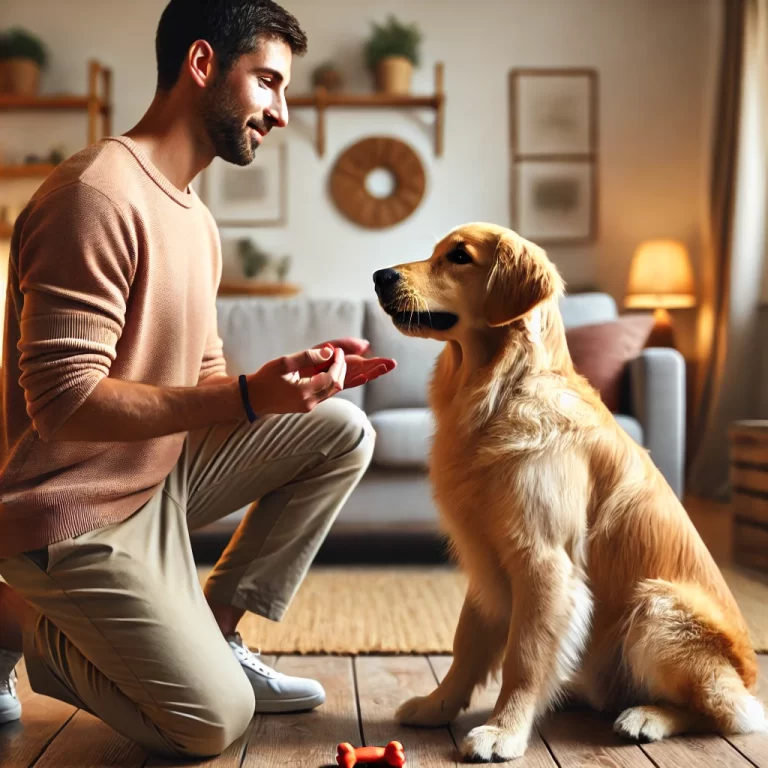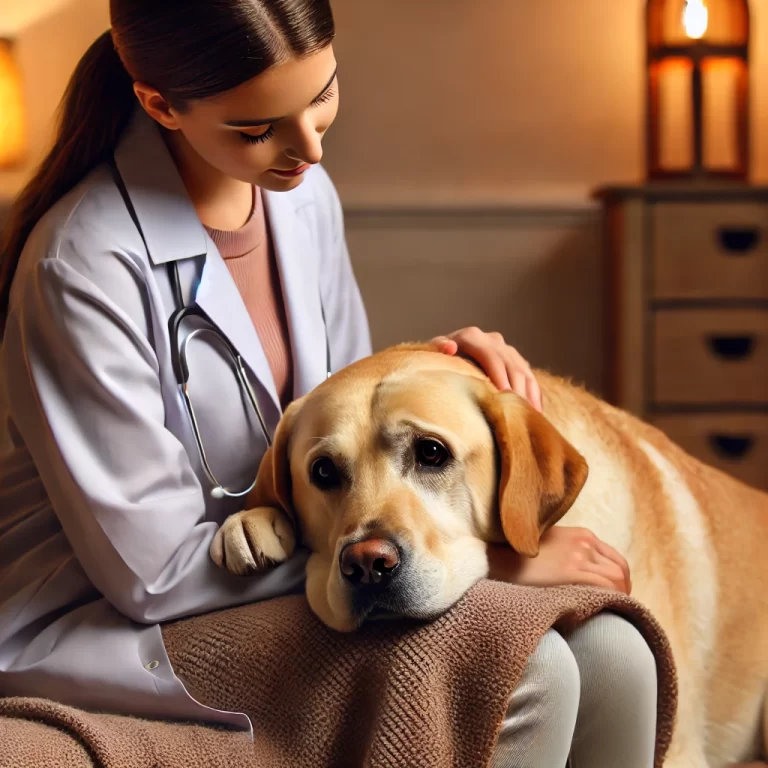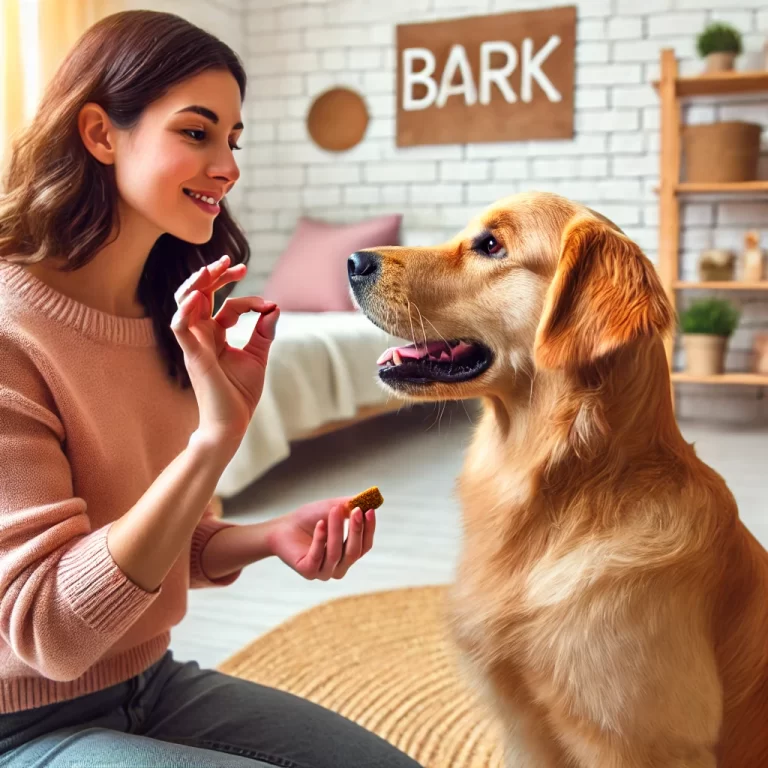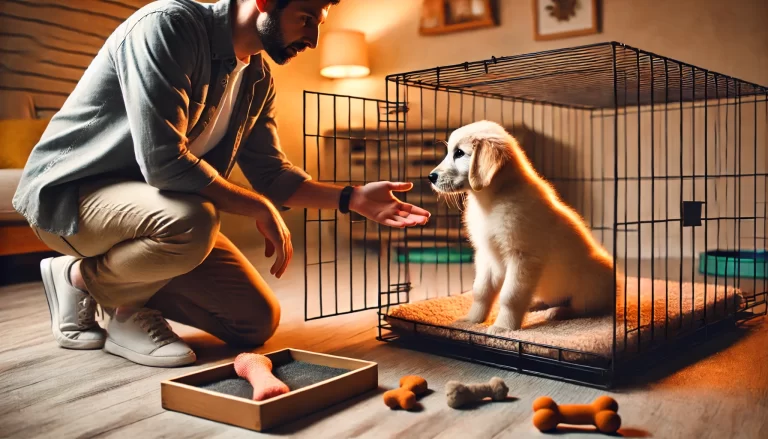How Do You Train Your Dog? | Complete Dog Training Guide
Training your dog is one of the most rewarding responsibilities of being a pet owner. Whether you’re raising a playful puppy or helping an older dog learn new habits, effective training can strengthen your bond and ensure a happy, well-behaved companion.
But how do you train your dog successfully? This guide will walk you through the essentials of dog training—from foundational obedience to behavior correction, socialization, and more—using humane, proven, and practical methods.
Table of Contents
- Why Is Dog Training Important?
- When Should You Start Training a Dog?
- Basic Obedience Training Commands
- The Power of Positive Reinforcement
- Crate Training and Potty Training
- Leash Training and Outdoor Behavior
- Socialization Tips for Puppies and Adults
- How to Correct Unwanted Behavior
- FAQ
Why Is Dog Training Important?
Training isn’t just about teaching tricks—it’s about communication and safety. A well-trained dog is easier to manage, more confident, and less likely to develop behavior problems. Key benefits include:
- Building trust and bonding with your dog
- Preventing behavioral issues like aggression or anxiety
- Ensuring your dog responds to commands in public spaces
- Making daily life easier for both of you
When Should You Start Training a Dog?
The best time to begin training is as early as 8 weeks old. Puppies are highly impressionable and can start learning basic commands and social behavior right away. However, it’s never too late—adult dogs can absolutely be trained with patience and consistency.
For rescues or older dogs, start with simple obedience and gradually move into more advanced training as trust builds.
Basic Obedience Training Commands
Here are the foundational commands every dog should know:
- Sit – Teaches calmness and impulse control
- Stay – Encourages patience and stability
- Come – Important for recall and safety
- Down – Helps manage energy and anxiety
- Leave it – Prevents dangerous item grabbing
Train using short, focused sessions (5–10 minutes), and always reward desired behaviors immediately with treats, praise, or play.
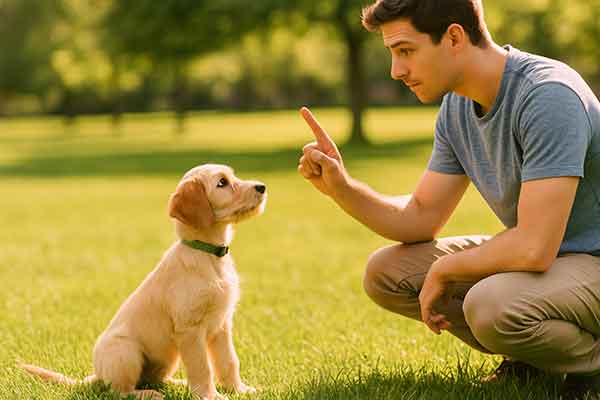
The Power of Positive Reinforcement
Positive reinforcement is the gold standard in modern dog training. It focuses on rewarding good behavior rather than punishing bad behavior.
What does this look like?
- Giving treats when your dog obeys a command
- Praising with “good boy/girl” and petting
- Using toys or games as rewards
Consistency is key. Dogs learn best when the outcome of their actions is predictable and beneficial.
Crate Training and Potty Training
Crate Training
A crate can be a safe, cozy den for your dog—not a punishment tool. Crate training helps with:
- Housebreaking
- Preventing destructive behavior when unattended
- Creating structure and calm
Make the crate inviting with bedding and toys, and start with short sessions. Never use it as a punishment.
Potty Training
Stick to a predictable routine:
- Take your dog outside first thing in the morning, after meals, and before bed
- Praise and reward immediately after they go potty outside
- Clean accidents thoroughly to remove odors
Consistency, patience, and positive reinforcement are the keys to successful potty training.
Leash Training and Outdoor Behavior
Pulling on the leash is one of the most common challenges for dog owners. Begin leash training indoors or in quiet areas before venturing into busy streets or parks.
Loose leash training tips:
- Use treats to reward walking by your side
- Stop walking when your dog pulls and resume when they return to you
- Use a well-fitted harness to avoid neck strain
Practice daily, starting with short walks and gradually increasing distance and distractions.
Socialization Tips for Puppies and Adults
Socialization is essential for raising a confident, well-adjusted dog. It means exposing your dog to:
- New people (different ages, appearances)
- Other dogs and animals
- Various environments (parks, traffic, elevators)
- Sounds, surfaces, and objects
Introduce new experiences gradually and pair them with rewards. Socialization windows close around 16–20 weeks for puppies, so early and positive exposure is vital.
How to Correct Unwanted Behavior
Unwanted behaviors like barking, jumping, chewing, or aggression are common. Here’s how to address them:
General Tips:
- Identify the cause: Is your dog bored, anxious, or seeking attention?
- Redirect behavior: Give a chew toy if your dog bites furniture
- Ignore attention-seeking: Don’t reward barking or whining with interaction
- Reinforce calm: Reward relaxed behavior often
For serious issues like aggression or resource guarding, consult a certified dog trainer or veterinary behaviorist.
FAQ
How long does it take to train a dog?
It depends on the dog’s age, breed, and past experiences. Basic obedience may take weeks, while full behavior modification can take months. Consistency is key.
Can older dogs still be trained?
Absolutely. Dogs of any age can learn new behaviors, though it may take more time and patience.
What treats are best for training?
Use small, soft, high-value treats like boiled chicken, cheese bits, or commercial training treats that are easy to eat quickly.
How many times a day should I train my dog?
Two to three short sessions (5–10 minutes each) per day are more effective than long, infrequent sessions.
Should I punish my dog for bad behavior?
No. Punishment can lead to fear and anxiety. Focus on redirection and reinforcing desired behaviors instead.
Conclusion
So, how do you train your dog? Start with understanding your dog’s needs, use consistent positive reinforcement, and build trust through daily interaction and structure. From basic obedience to leash skills and social confidence, training is a lifelong journey—not a one-time task.
Whether you’re training a new puppy or working with an adopted adult, the same principles apply: patience, consistency, kindness, and a whole lot of love. With these tools in hand, you’ll raise a dog who is not only well-behaved—but also happy, secure, and a true joy to be around.

